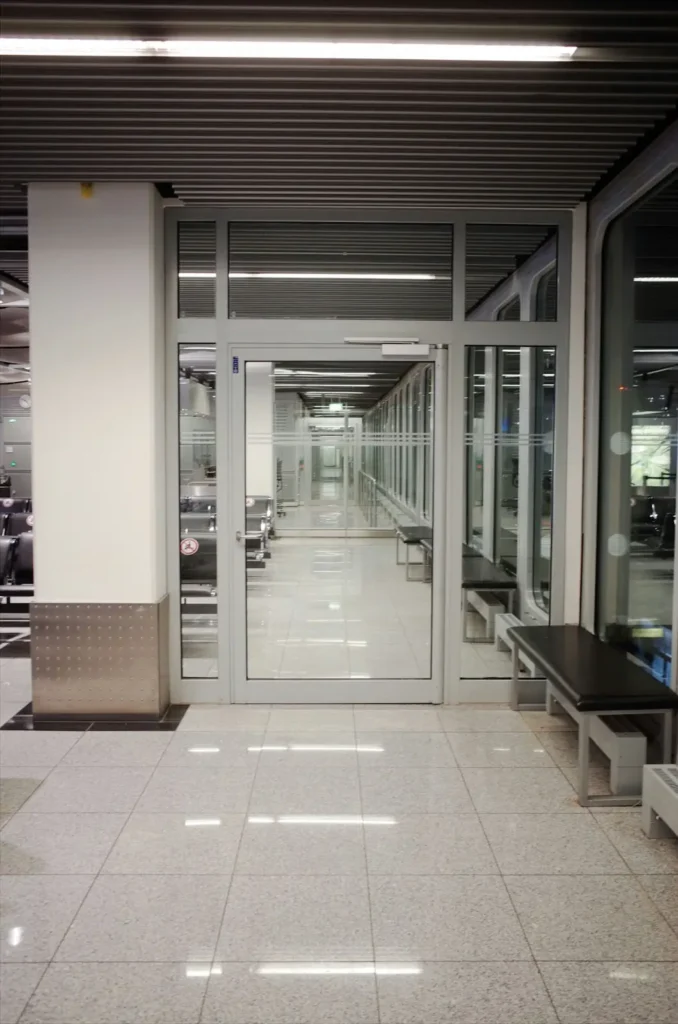Written By: Brad Campbell | December 15, 2024
Maintaining the safety and security of building occupants during an active threat scenario is a growing concern for businesses, schools, government buildings, and other public facilities. A critical aspect of modern building security is the ability to withstand forced entry during a violent attack, particularly an active shooter attack.
One of the key ways to evaluate the effectiveness of security systems in the face of such active threats, particularly when it comes to a building’s windows and doors, is through standardized testing methods that simulate real-world attack scenarios.
The ASTM 3561 Standard Test Method for Forced-Entry-Resistance of Fenestration Systems After Simulated Active Shooter Attack provides a framework for testing how well building components can resist entry after a violent ballistic assault.

The ASTM 3561 Standard Test Method was designed to assess the performance of fenestration security systems, which include windows, doors, and glazing systems, when subjected to a simulated active shooter scenario.
Fenestration security systems are crucial for high-risk facilities where protecting occupants and preventing access to unauthorized individuals — access denial — is a top concern.
By applying the ASTM 3561 standard to materials and systems, manufacturers and security experts can evaluate how well a fenestration security system performs when compromised by ballistic impacts, offering a measure of confidence for those responsible for the safety of people and property.
The main goal of ASTM 3561 testing is to determine whether an attacker can create an opening large enough to allow entry into a building after weakening the fenestration system with gunfire.
This kind of testing doesn’t aim to determine if a window or door will stop a bullet or ensure full protection from a ballistic attack, but rather it simulates the likely next step after an initial attack — an attempt to forcibly break through and gain access.
In the unfortunate event of an active shooter incident, securing entry points is one of the most effective ways to slow down or prevent an attacker from reaching potential victims. Windows and doors are particularly vulnerable, and their strength is often tested during such incidents.
The ASTM 3561 test method aims to simulate what happens after an initial attack weakens these systems, evaluating a product's ability to withstand physical assault after gunfire.
This testing can help building owners or security consultants choose products that offer the highest levels of access denial during active threat scenarios. It also informs manufacturers whether their windows, doors, and other security products can meet necessary safety standards.
As a result, facilities that opt for fenestration systems tested and certified to ASTM 3561 standards can be better prepared for the worst-case scenario, minimizing the risks to those inside.

The testing begins by firing ballistic projectiles at the fenestration system to simulate the damage caused by an active shooter.
This step is not meant to assess ballistic resistance (i.e., stopping bullets), but instead replicates the type of damage a building's windows, doors, and glazing might sustain in such a scenario.
Once the system has been damaged by gunfire, it is subjected to additional physical force via a 100 pound impactor suspended by cables and swung as a pendulum to impact the glass from increasing heights to intensify the impact strength. There are 8 sequences and a system is rated to the highest successfully completed sequence. This test method is used to evaluate whether an opening can be created large enough for a person’s hand to pass through and manipulate the mortise lock or panic egress hardware.
This is the most critical aspect of the testing, as an active shooter may attempt to enter through compromised windows or doors, either directly or by passing their arm through to open a door or window from the inside.
Importantly, the ASTM 3561 standard requires that systems be tested as complete units, meaning that windows, doors, and their frames are evaluated together. This ensures that each part of the system works in tandem under pressure and that the security offered isn’t compromised by a weak link.
If a manufacturer modifies any part of a fenestration system after it has been tested, the system must undergo full testing again to ensure continued compliance. This prevents small design changes from affecting the overall security performance.
While ASTM 3561 is an important standard for evaluating forced entry resistance after a ballistic attack, it’s important to understand what it doesn’t address, primarily that it doesn’t measure whether the fenestration system can stop bullets. Instead, the focus of the testing is on forced entry resistance after the system has already been weakened by gunfire, which can include penetration by bullets.
It’s also important to understand that ASTM 3561 testing is conducted in a controlled laboratory environment and the method is not intended to be used for on-site field testing, meaning that results apply only to the specific systems tested under laboratory conditions. These conditions are also different from those of other ASTM test methods, such as the F3038 method, which is designed to simulate a forced entry attempt by an armed mob.
For any facility where there is a heightened risk of an active shooter or similar threat, forced entry resistance is essential. Windows and doors are often the first point of attack, and if they are easily breached, it allows the attacker to gain access to vulnerable areas, putting lives at risk.
Schools, government institutions, commercial buildings, and healthcare facilities are increasingly looking for solutions that can delay or prevent forced entry during an active threat scenario, giving authorities more time to respond and ensuring that occupants have more time to escape or shelter in place.
By selecting fenestration systems that meet the ASTM 3561 standard, facility managers can take proactive steps toward safeguarding their buildings and the people inside them.

For manufacturers of fenestration security products, the ASTM 3561 testing method provides a clear set of guidelines on how to test and rate the security of products in terms of active threat/active shooter access denial. It encourages the development of robust fenestration systems that can withstand forced entry even after they’ve been compromised by gunfire.
As architects and engineers seek to design buildings that meet modern security needs, this test can help them choose systems that have been proven to perform under extreme conditions.
The ASTM 3561 Standard Test Method is a vital tool in the ongoing effort to protect people from the threat of an active shooter.
By testing the forced entry resistance of windows, doors, and other fenestration systems during a simulated active shooter attack, this standard helps building owners and security experts identify products that can offer increased protection in moments of crisis.
Whether you’re managing a school, a government building, or a high-risk commercial facility, ensuring that your fenestration systems meet ASTM 3561 testing standards can provide peace of mind and, more importantly, save lives during an active threat emergency.
Contact Riot Glass today to discuss our active threat access denial solutions.

HOW CAN WE HELP YOU?
